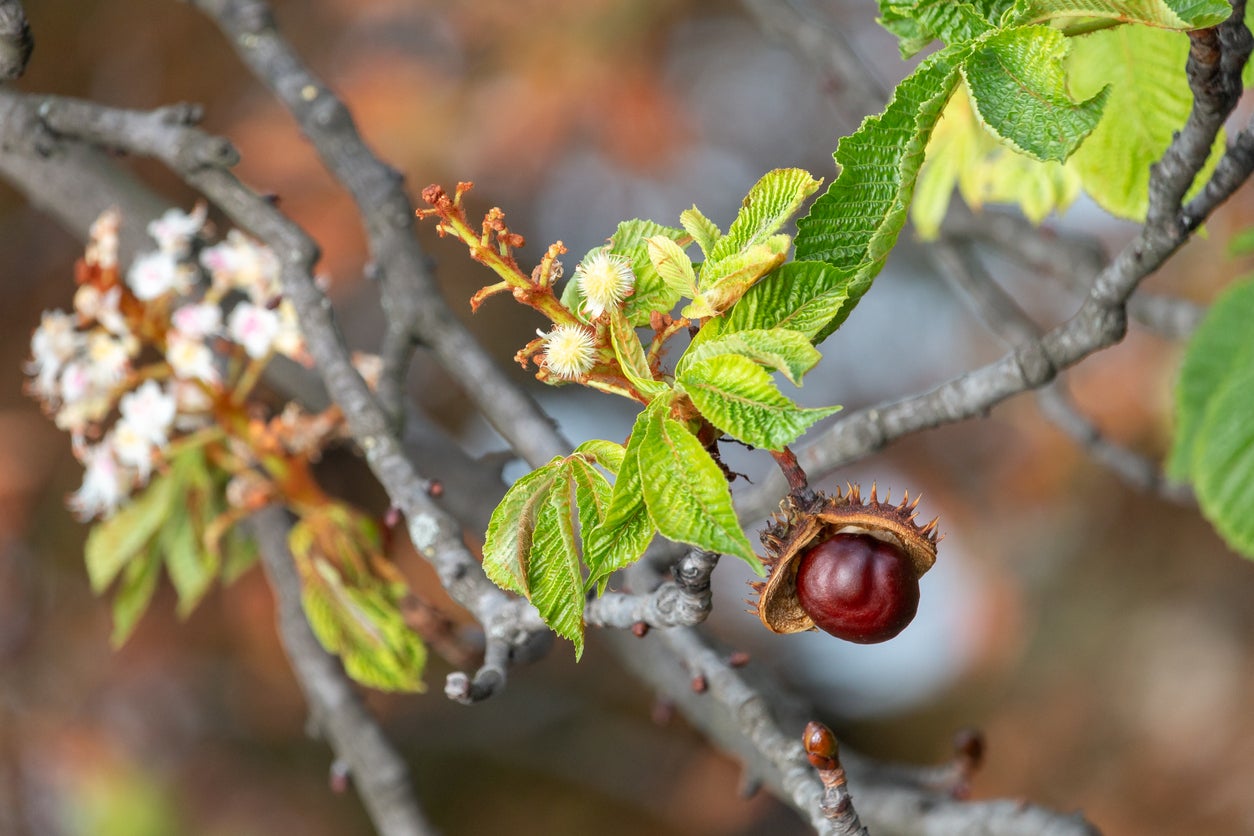Horse Chestnut Pruning: Should You Cut Back Horse Chestnut Branches

Horse chestnut trees are fast growing trees that can attain heights of up to 100 feet (30 m.). With proper care, these trees have been known to survive for up to 300 years. So, what does it take to keep a horse chestnut tree healthy? Do you need to cut back a horse chestnut? The following information on horse chestnut pruning discusses the pros and cons of pruning horse chestnut trees and how to prune them.
Should you Cut Back Horse Chestnut Trees?
Horse chestnut (Aescuclus hippocastanum) is a non-native deciduous tree whose name is derived from the mark left on twigs after the foliage has fallen, which looks much akin to an inverted horseshoe. Aesthetically, the tree is known for its large white flowers. These give way to conkers, large brown spine-covered nuts.
Horse chestnuts do not send out shoots that require maintenance in the form of aggressive pruning. This means that trimming horse chestnut is just that, a light trimming. There are some exceptions, however.
How to Prune a Horse Chestnut
Horse chestnut pruning may need to occur to eliminate diseased or damaged branches. Pruning should also occur, albeit when the tree is young and trainable, to improve air flow and light penetration. This means removing any crossing, crowded and low branches.
Mature trees should be left alone as much as possible with the exception of removing damaged or diseased limbs. This tree is prone to quite a few diseases, and pruning opens up the possibility for transmission.
When to Prune a Horse Chestnut
Before you tackle a pruning job on a horse chestnut, consider timing. There are good times and bad times to prune this particular tree. A general rule of thumb is to avoid pruning horse chestnut trees in early spring to mid-summer and late summer to mid-winter. Better times to prune this specimen are from mid-winter to early spring or mid-spring to mid-summer.
Before pruning the tree, consider what you hope to achieve. If you wish to retard the height, it would be best to prune when the tree has lost its leaves in the fall to mid-winter. Very minimal trimming can be done any time of the year.
Sign up for the Gardening Know How newsletter today and receive a free copy of our e-book "How to Grow Delicious Tomatoes".
Major pruning projects might be better carried out by a certified arborist, both due to the large size of the tree and its penchant towards disease.

Amy Grant has been gardening for 30 years and writing for 15. A professional chef and caterer, Amy's area of expertise is culinary gardening.
